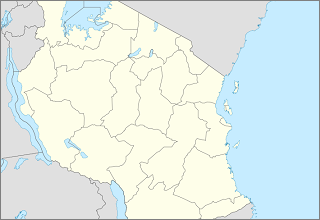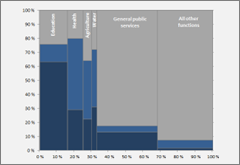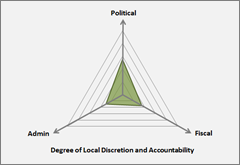 Country Profile Background
Country Profile Background
The United Republic of Tanzania, located on the east coast of Africa, is a federation of Tanzania Mainland and Zanzibar. Elected local governments were (re-)established in Tanzania Mainland in 1982. Since adopting a Policy Paper on Local Government Reform in 1998, the government has been pursuing an incremental strategy of “decentralization by devolution”. Although local governments form the front-line in the delivery of key public services, central authorities continue to play an important role in the local decision-making and in local service delivery processes.
 Organizational/Governance Structure of the Public Sector
Organizational/Governance Structure of the Public Sector
The public sector in Tanzania (Mainland) is organized in a hierarchical manner, combining elements of deconcentration and devolution. At the regional level, Tanzania Mainland is divided into 21 deconcentrated administrative regions, each of which is headed by a Regional Administrative Secretary. The main level of local government in Tanzania is formed by elected Local Government Authorities (LGAs), comprising 106 District Authorities and 27 Urban Authorities. In order to enhance community participation, Village Councils and Mtaa Committees are elected below the district level.
 Functional Responsibilities of the Local Public Sector
Functional Responsibilities of the Local Public Sector
Local (district and urban) authorities form the main local government level in terms of public service delivery. These local authorities are responsible for the delivery of primary and secondary education; local health services; agricultural extension and livestock promotion; water supply; local roads and infrastructure; as well as community development, urban services and local environmental services. The deconcentrated regional administrations manage regional hospitals and oversee local public service delivery. Central line ministries de facto retain significant responsibilities in functional areas that are formally assigned to the local government level.
 Fiscal Profile of the Public Sector
Fiscal Profile of the Public Sector
Even though district and urban authorities are assigned many important social and economic public service delivery responsibilities, spending by local government authorities accounts for only 20.2% of public sector expenditures. In addition, regional administrations are responsible for 2.0% of public expenditures, while central line ministry expenditures on front-line service delivery at the local level account for 11.5% of total public spending. In total, therefore, local public sector expenditures in Tanzania account for only about 33.7 percent of total public expenditures. This means that almost two-third of public sector resources (66.3%) is retained at the central level without finding its way to the local public sector.
Local Government Authorities raise a relatively small portion of their financial resources (about 6 percent) from own source revenues and are highly dependent on intergovernmental fiscal transfers from the center. Recurrent sectoral ‘block grants’ form the main funding source for the delivery of local public services. A Local Government Development Grant system provides discretionary as well as sectoral/earmarked development grants to LGAs. Taxes on business income and turnover as well as nontax
revenues form the bulk of local government revenues; in contrast, local property taxes contribute less than 10 percent of local own source revenues.
 Institutional Profile of the Local Public Sector
Institutional Profile of the Local Public Sector
Despite the presence of local governments in Tanzania that are led by elected councils and that have substantial service delivery responsibility, not all aspects of the local public sector in Tanzania are equally decentralized. In particular, central authorities retain a high degree of control over local government staffing levels, wages, and appointments. Likewise, progress on fiscal decentralization has been mixed. Although local revenues increase steadily from year to year, local revenue autonomy is limited. While a formula-based Local Government Development Grant was successfully introduced in 2005, recurrent sectoral block grants continue to be allocated in a discretionary manner.
Country Profile Information
Complete LPS Country Profile: Tanzania (PDF)
Complete LPS Country Profile: Tanzania (XLS)





